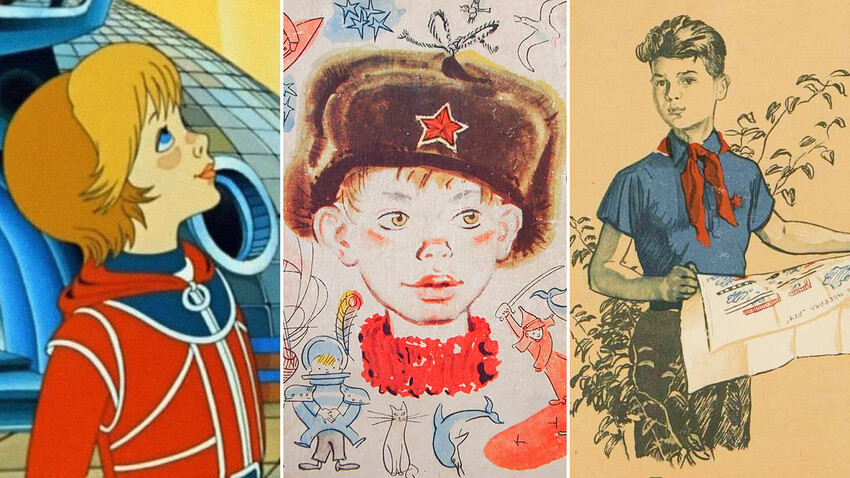
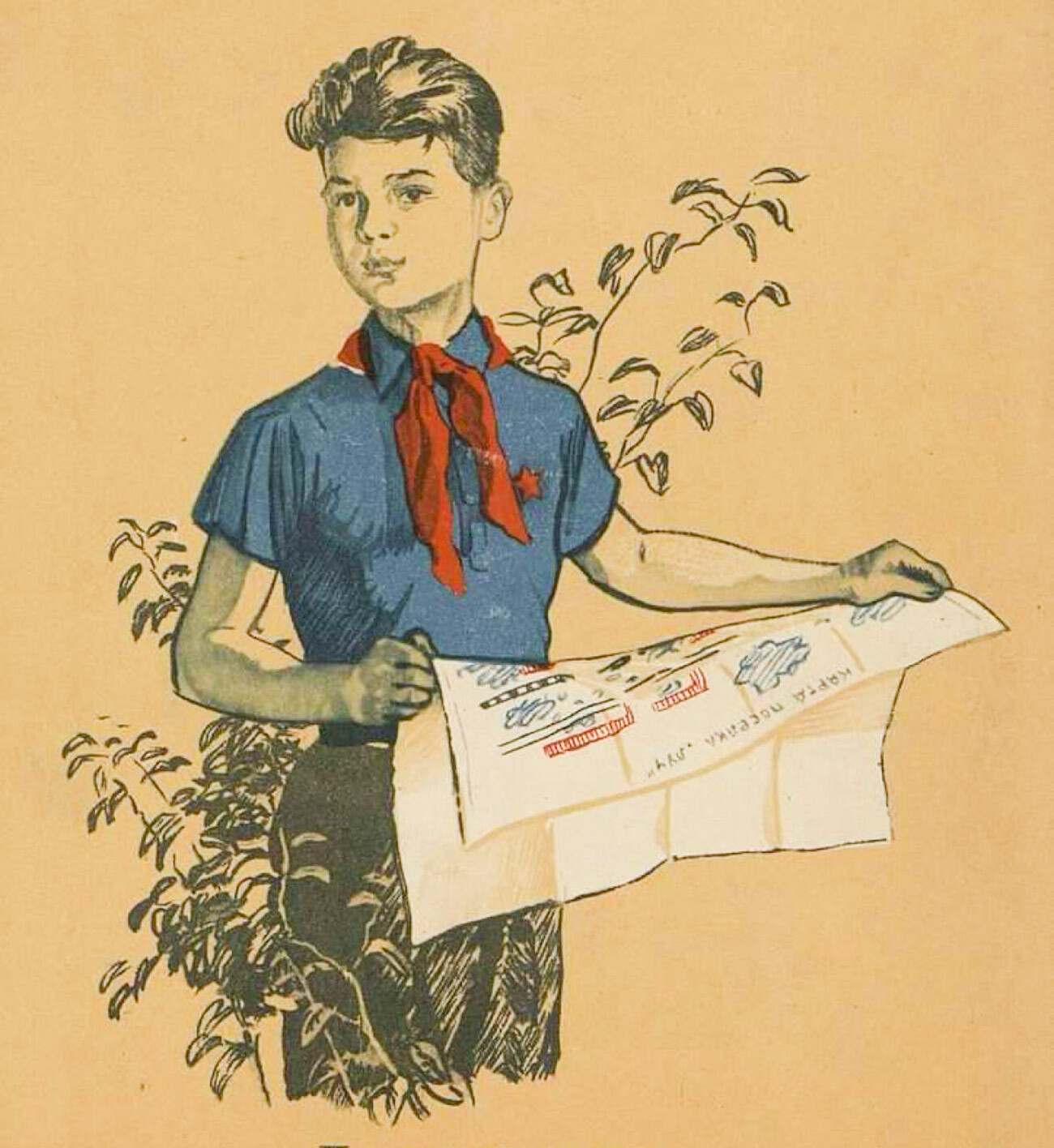
The protagonist of Arkady Gaidar's book ‘Timur i ego Komanda’ (‘Timur & his Squad’), which came out in 1940, forms a group of children at a dacha village (cluster of countryside cottages) to help the elderly and families whose relatives are serving in the Red Army. One of his main tasks is to knock some sense into local hooligan Mishka Kvakin who, together with his gang, keeps stealing fruit from the village orchards.
'Timur & his Squad' was incredibly popular in the USSR: It was the book that set in motion the ‘Timurite’ movement of Young Pioneer schoolchildren, who volunteered to help the elderly and families during the Great Patriotic War and afterwards, as well as looking after the graves of the fallen. Timur's adventures continued in Gaidar's short novels 'The Commandant of the Snow Fortress' and 'Timur's Oath’.
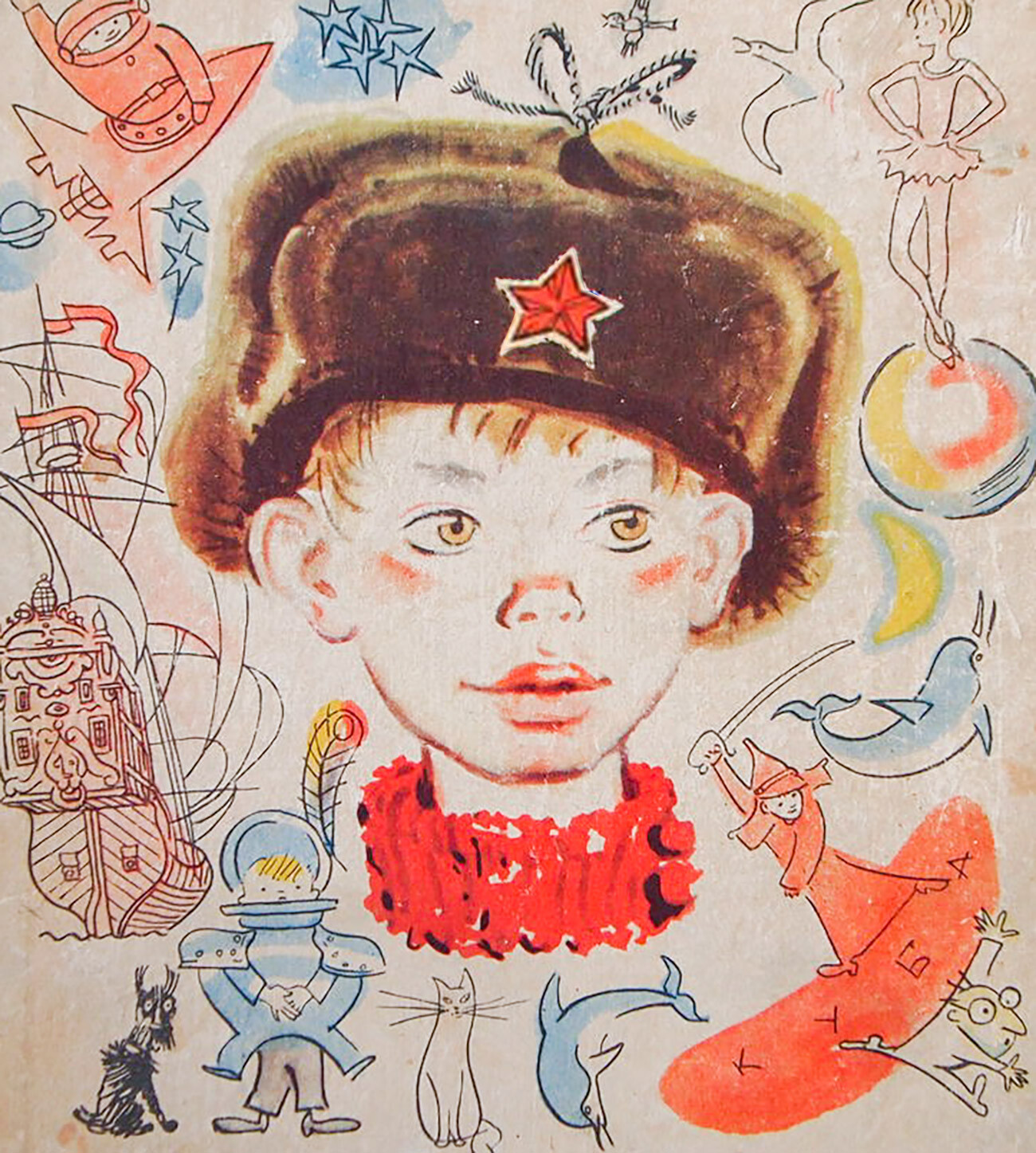
The main protagonist of ‘Udivitelnye priklyuchenie Denisa Korableva’ ('The Amazing Adventures of Dennis Koravlyev’') by Viktor Dragunsky had a real-life inspiration – his son Dennis. In the book, he lives with his parents in Moscow in the late 1950s and early 1960s and constantly gets into various humorous situations. He throws his breakfast out of the window and, naturally, is soon paid a visit by the victim on whom the semolina pudding landed; or he hides under his neighbor's bed during a game of hide-and-seek, imagining how he will spend the next twenty years there, but, in the end, scares the poor elderly woman; or he launches an attack on the ‘Whites’ while watching a war movie in the cinema. Dragunsky wrote more than 60 short stories about Dennis Korablyov and many of them were adapted for the big and small screen.
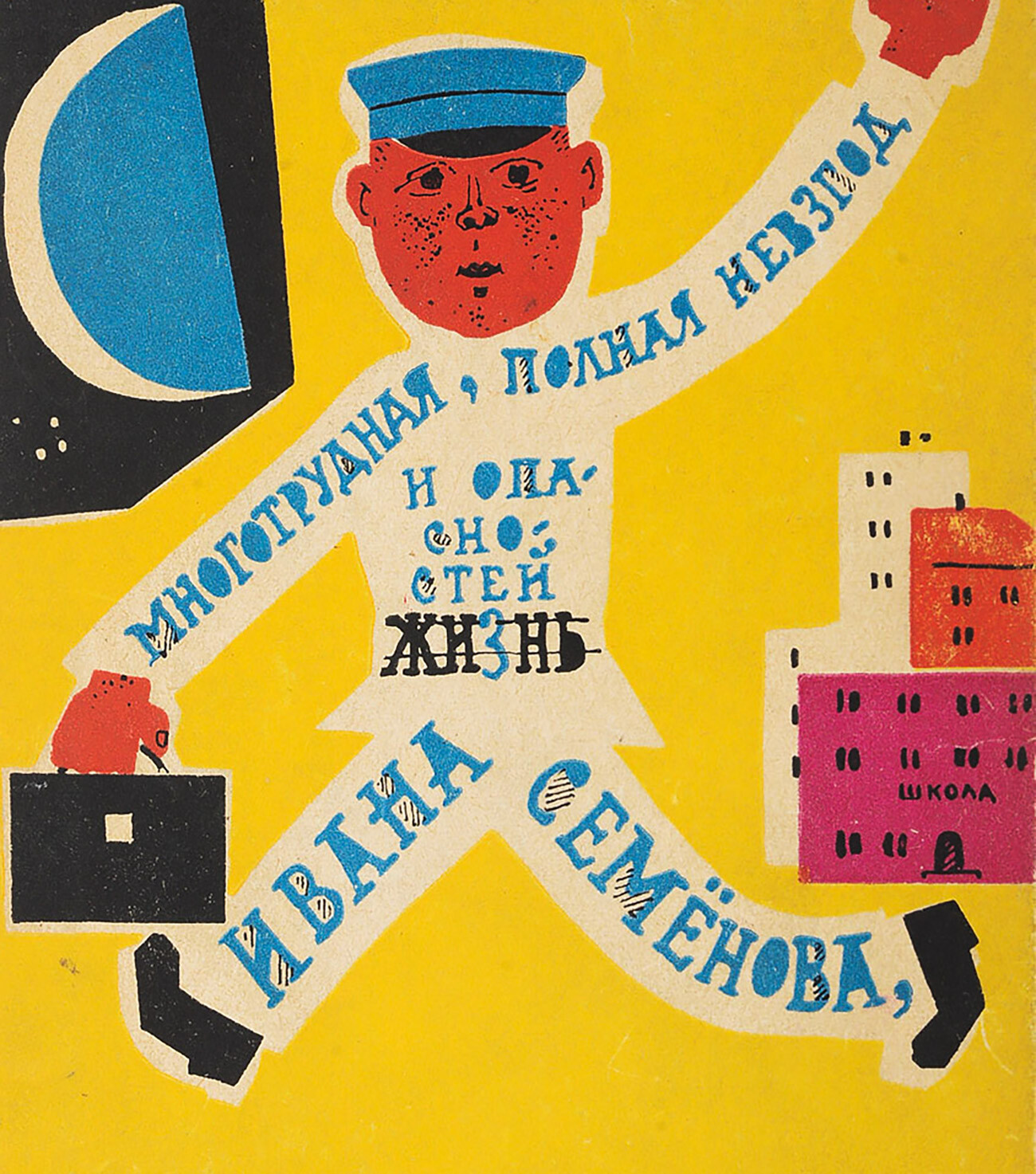
‘Mnogotrudnaya, polnaya nevzgod i opasnostey zhizn' Ivana Semonova, vtoroklassnika i vtorogodnika’ ('The Difficult Life, Full of Adversity and Danger, of Ivan Semenov, Second Grader & Grade Repeater') by author Lev Davydychev was a real hit in the 1960s-1980s. The resourceful protagonist writes letters to the Finance Ministry, saying it would be a good thing for him to retire on a pension, walk on all fours pretending to be a polar bear and catch spies. In other words, he lives the colorful life of a boy who has an exuberant imagination and doesn't want to study. Against the background of the well-behaved characters, Semenov seemed very realistic – as if the neighbor next door was talking about his adventures.
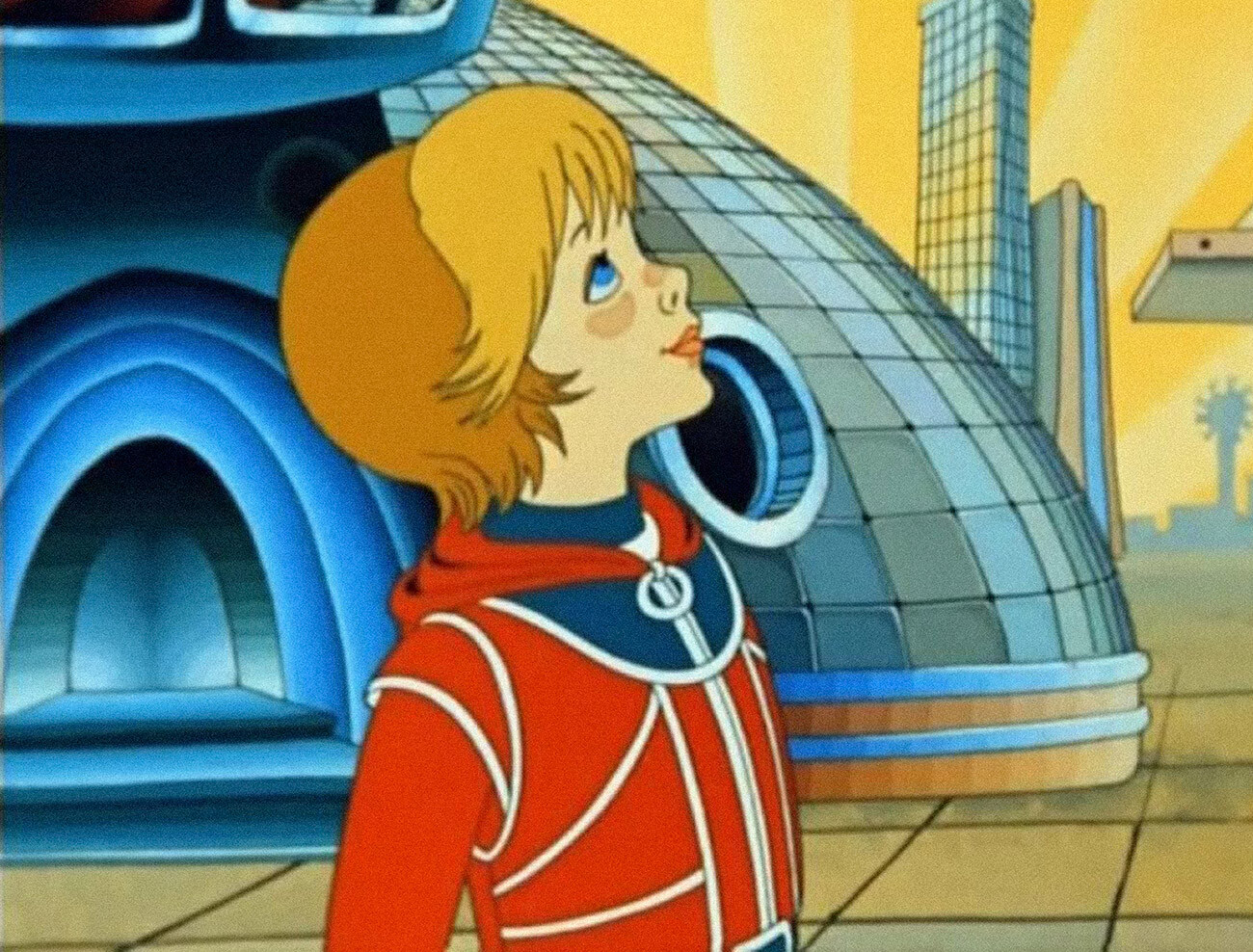
The inquisitive girl from the future was invented by science fiction author Kir Bulychev in his ‘Priklyuchenie Alisa’ (‘Alice’s Adventures’) book series. Together with her father, she goes in search of exotic animals, rescues a spaceship captain in trouble, travels back in time and catches space pirates, hobnobs with the inhabitants of the Age of Legends, in which magicians and dragons exist, and saves the Earth from a madness-inducing virus contained in a lilac ball. Today, Alisa would have been described as a superheroine: She is an excellent athlete and, besides, knows how to get on with anyone, be it a talking bird or Kolya Gerasimov from an ordinary school.

The adventures of Yura Barankin and Kostya Malinin, characters in Valery Medvedev's book ‘Barankin, bud muzhchinoy!’ ('Barankin, Be a Man!'), begin when they are given a two out of five in geometry at school. Their fellow pupils put them to shame for their poor marks and the main protagonist decides he's had enough of being human and devises a spell that turns him and his friend into sparrows. Only, it turns out that an avian life is full of dangers. Yura and Kostya recite an incantation several more times and turn into butterflies and ants – but, after realizing they are not going to find a carefree existence, they return to human form.
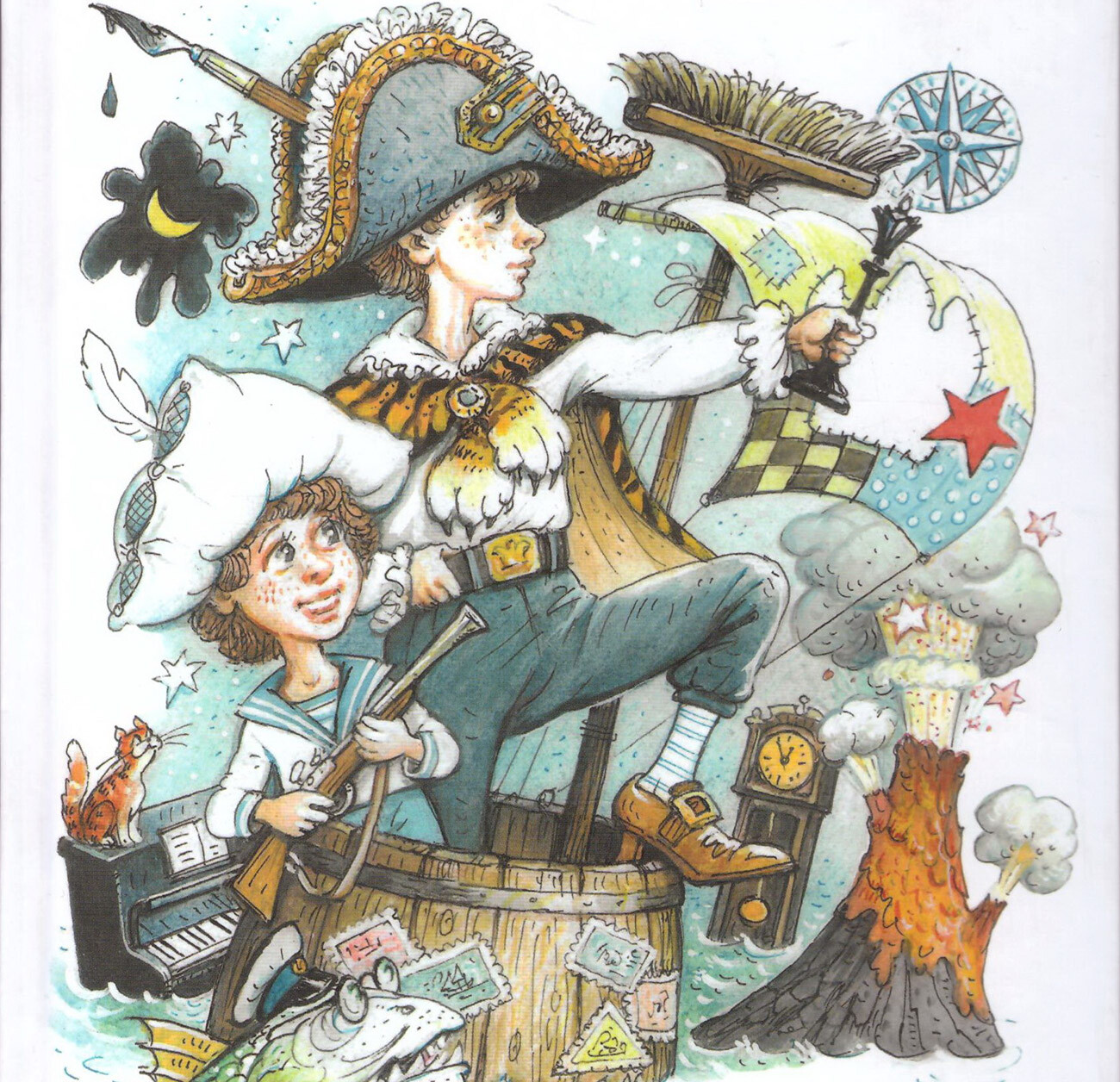
‘Conduit and Shvambraniya’ is a two-tone autobiographical story about the childhood of Lev Kassil and his brother Iosif. They transport the reader to the imaginary world of ‘Schwambrania’, which has been waging wars with Balvonia and Caldonia. It is a kingdom where Lelya is tsar and Oska is a postman. The land of carefree childhood, in which everything is like a Jules Verne adventure novel, becomes a refuge for the two brothers from Pokrovsk as revolution rages in the real world. In their Schwambranian world, everything takes its natural course. But, with time, the line between normal life and the invented world becomes ever thinner until, at last, Schwambrania disappears.

The hero of Anatoly Rybakov's book ‘Priklyuchenie Krosha’ (‘The Adventures of Krosha’) – Sergei Krasheninnikov or Krosh for short – is a fighter for justice. Among other things, he solves a theft from a motor vehicle depot and the disappearance of a collection of Japanese netsuke figures and tries to establish the identity of an unknown soldier. His adventures are very down-to-earth and, at the same time, a little naive and this lends them a particular charm.
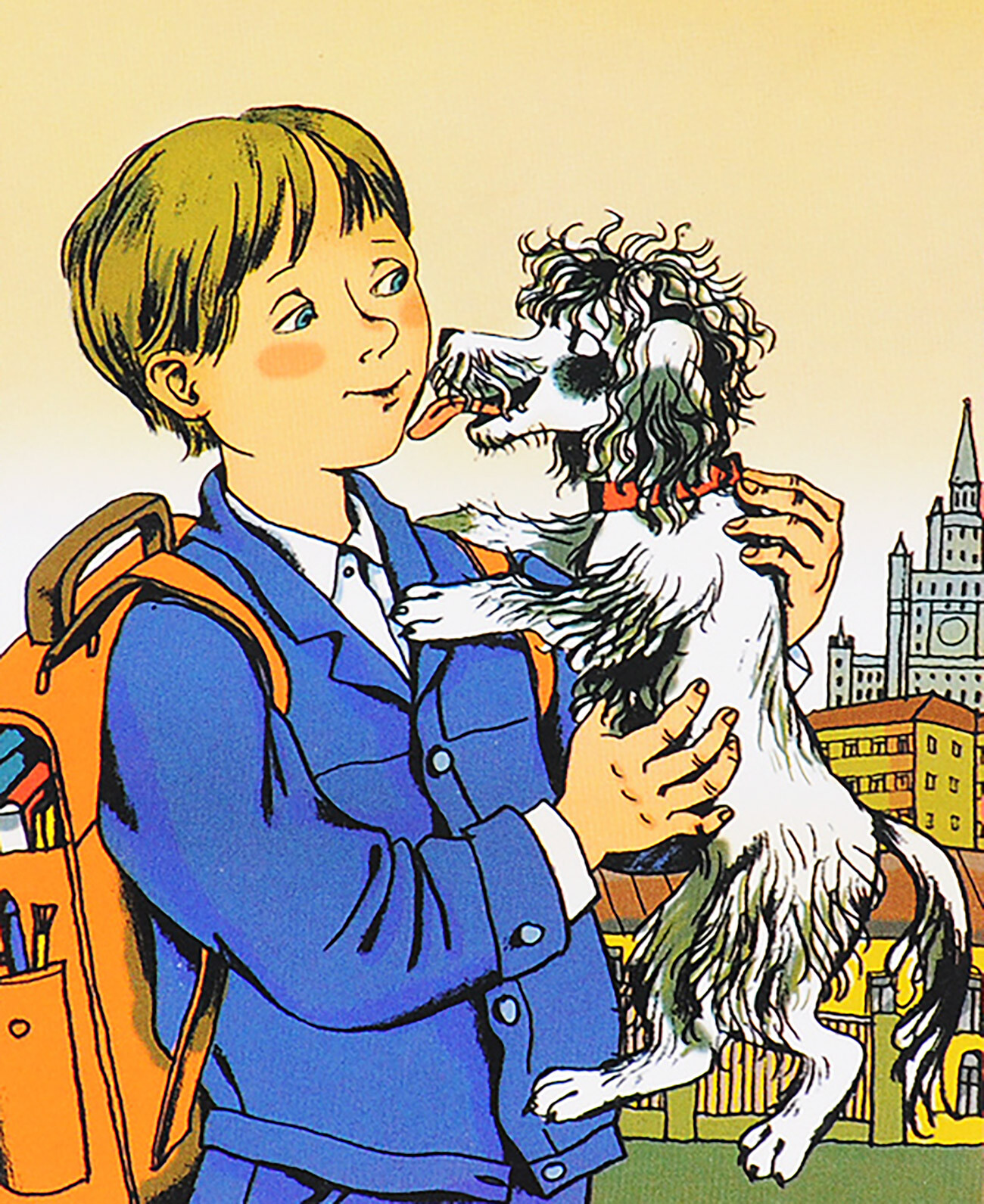
Alyosha Seroglazov, nicknamed ‘Twoschoolbags’, and his puppy Kysh are the heroes of the eponymous book by Yuz Aleshkovsky. Alyosha is in the first grade and is training his dog, which his father bought at an animal market. He got his nickname as a result of being the smallest in class – just two school bags high (as measured by a fellow pupil). But, this does not prevent him from making friends and his parents – a strict mother and easy-going father – support him in all the situations he finds himself in.
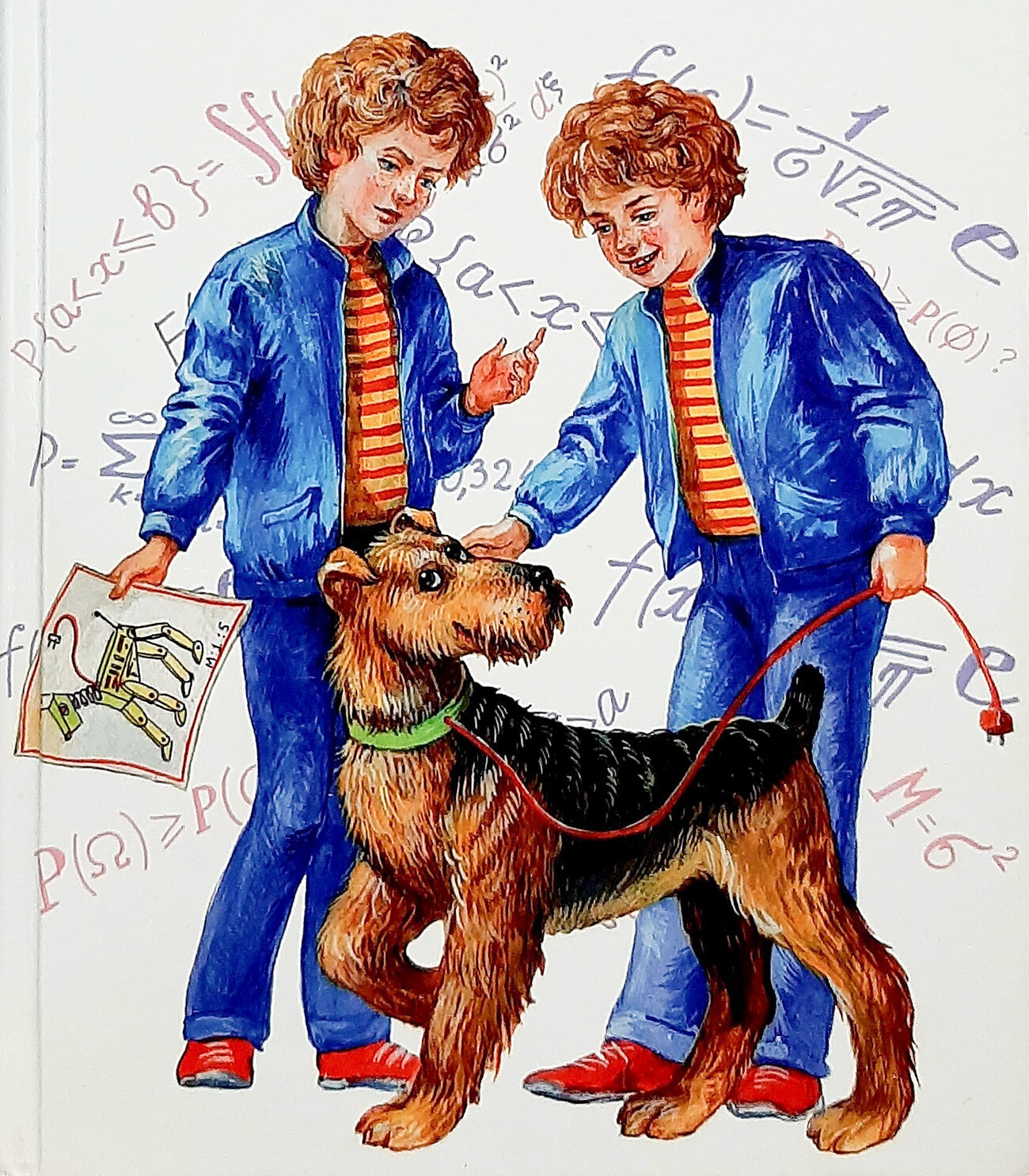
Professor Gromov has built an android named ‘Elektronik’, which looks like a 12-year-old boy and possesses outstanding mental and physical abilities. And the recurring hero in the stories by Evgeny Veltistov also dreams of becoming human. One day, he escapes from the professor and encounters Seryozha Syroyezhkin, whose likeness Gromov borrowed for his invention. Elektronik then goes to school in his place and gets full marks in class, unaware that criminals are after him…
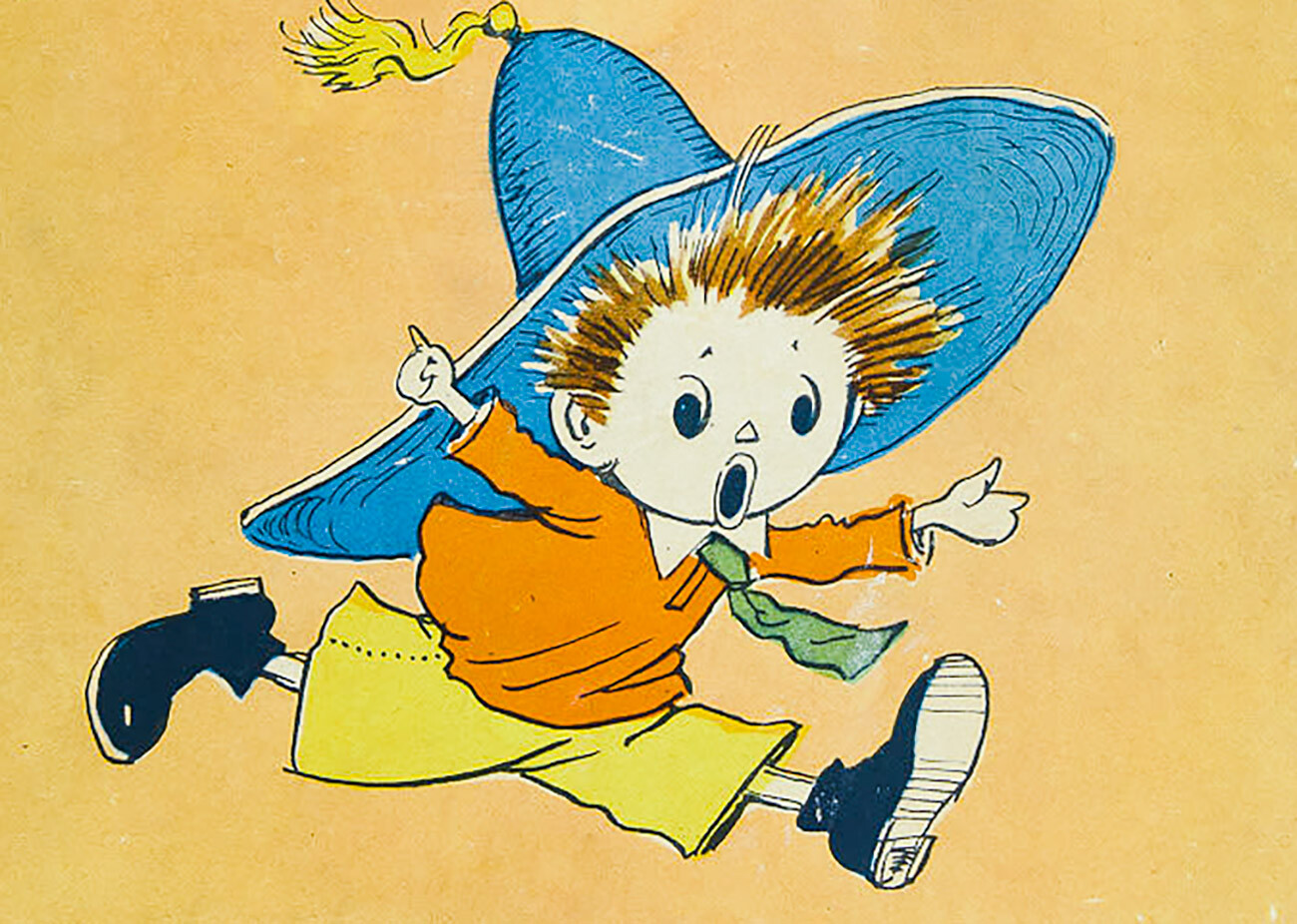
A sombrero with protruding ginger tufts of hair, bright yellow trousers, a green tie and an orange shirt – ‘Neznaika’ (which translates as ‘Know-Nothing’) is easily recognizable by his distinctive appearance. He is like all children rolled into one – hyperactive and fidgety and, simultaneously, plucky and resourceful. There's a lot he doesn't know and he likes to brag a bit: In short, he behaves like a perfectly ordinary child aged about seven!
Nikolai Nosov's first story about ‘Neznaika’ came out in 1954: In it, readers get to know the hero, his friends and the other inhabitants of the town of Tsvetochny – Vintik, Shpuntik, Tyubik, Pilyulkin and others. ‘Neznaika’ and his friends journey to the town of Solnechny and even to the moon and his adventures even continued in the 2000s: Writers Svetlana Oseyeva and Pyotr Solodky decided to write a story about his space travels.
If using any of Russia Beyond's content, partly or in full, always provide an active hyperlink to the original material.
Subscribe
to our newsletter!
Get the week's best stories straight to your inbox